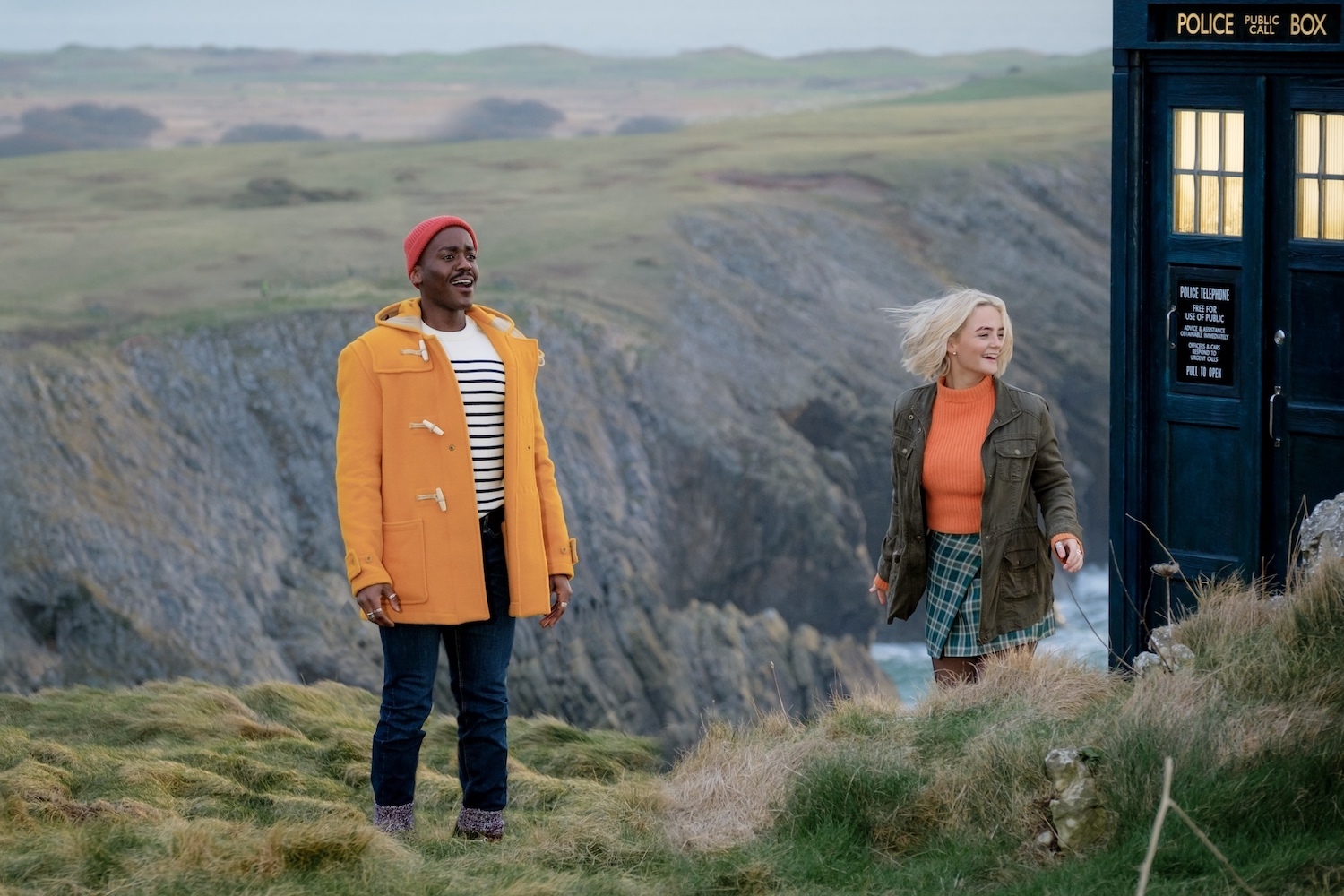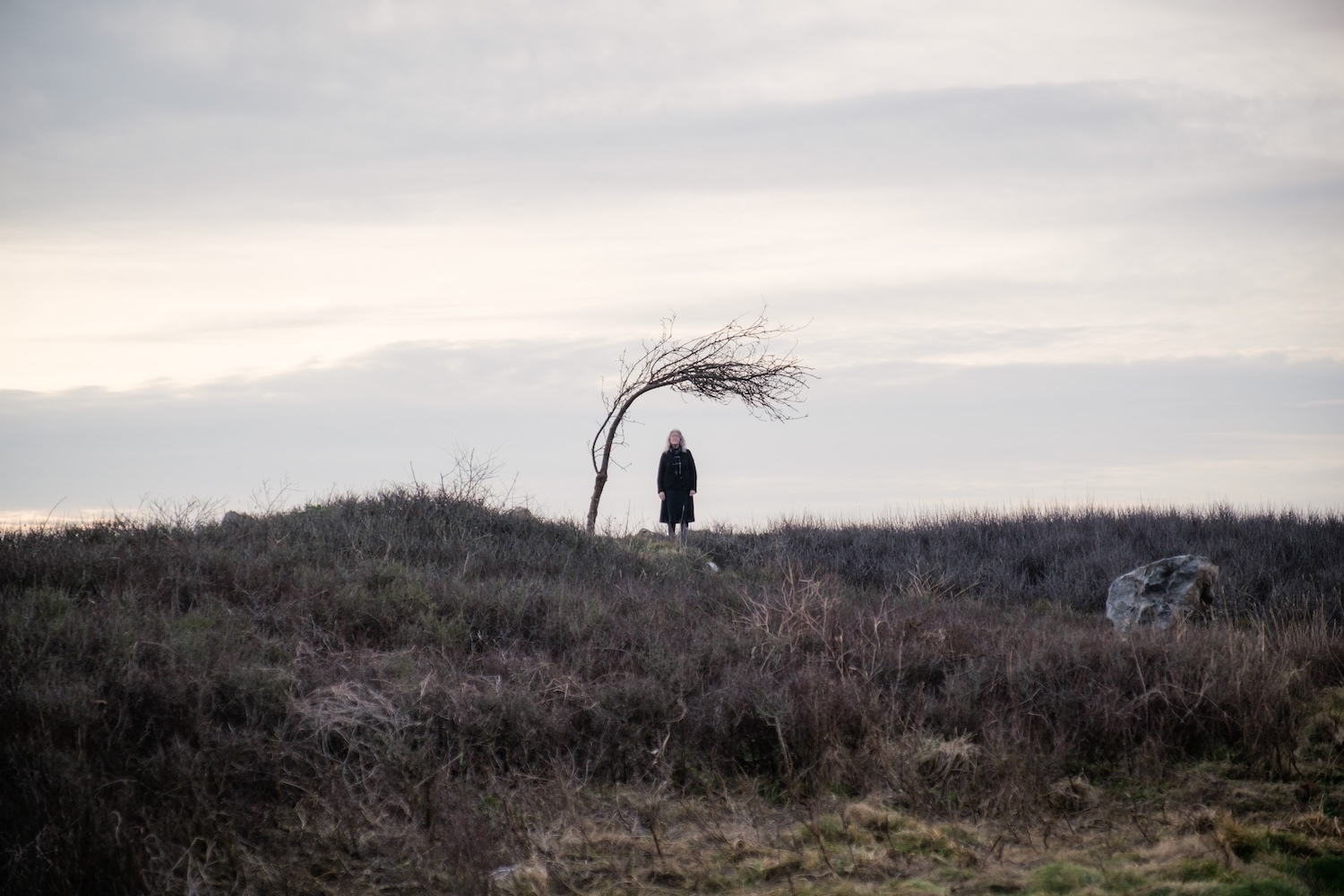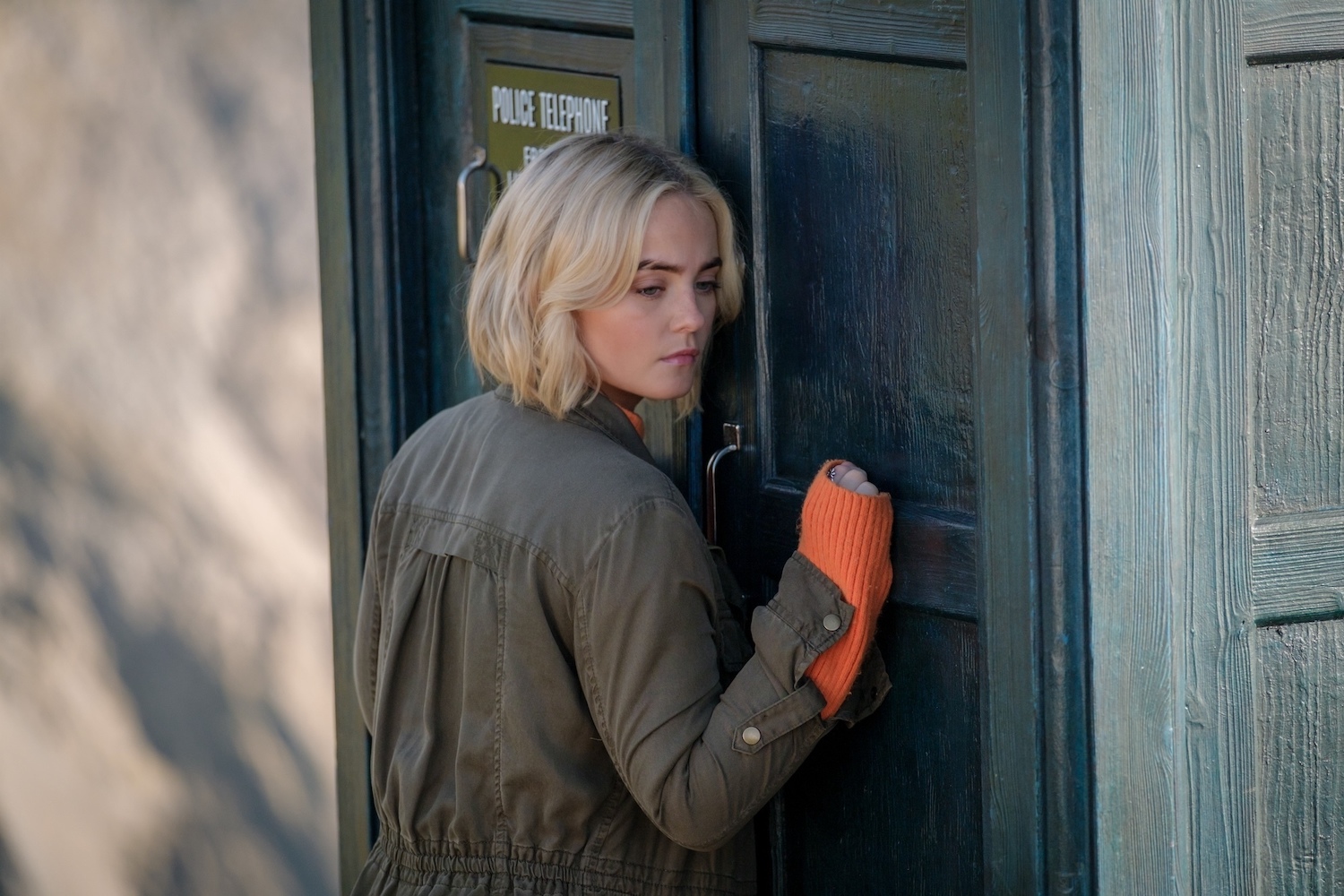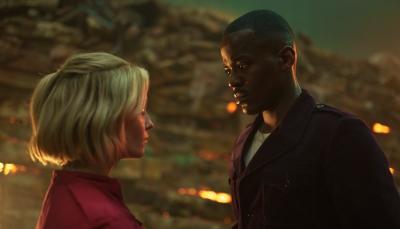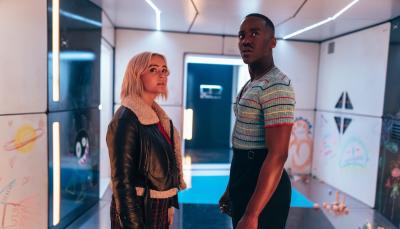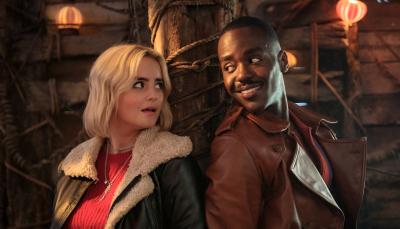The Ruby-Centric "73 Yards" is 'Doctor Who's' Best Episode in Years
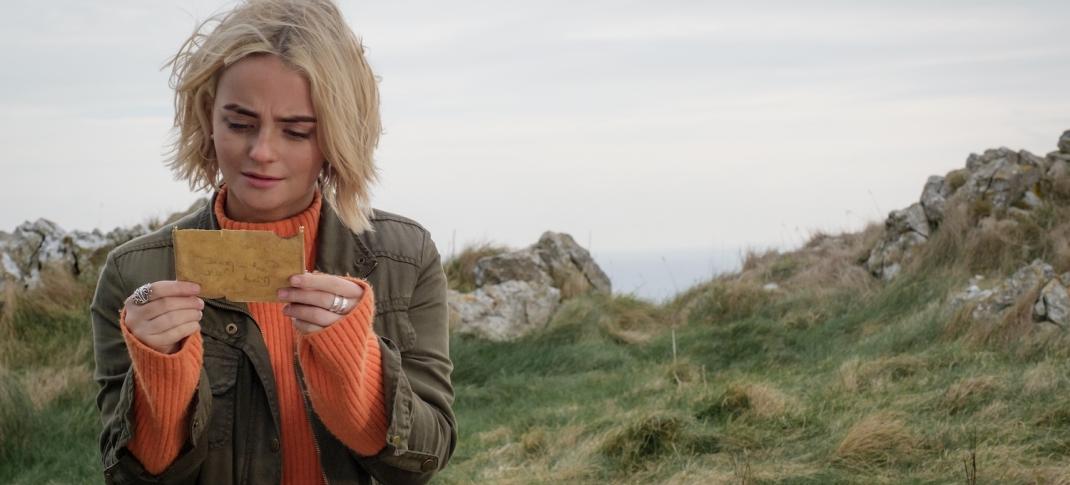
Millie Gibson in "73 Yards"
(Photo: Disney+)
It is a truth universally acknowledged that some of Doctor Who's best episodes barely feature the show's primary character. These so-called "Doctor-lite" episodes were initially deployed during showrunner Russell T. Davies' first tenure to help mask the fact that the show was filming two episodes at once, and its lead actor literally couldn't be in two places simultaneously.
But by forcing itself to think out of the box about how it was telling its stories, this technique ultimately led to some of the franchise's best and most original hours. "Blink" and "Turn Left" are considered modern classics, and while "73 Yards," the first "Doctor-lite" episode of Davies' second tenure, doesn't quite reach those heights, it's still the best episode of this show we've seen in years.
The Ruby Sunday-centric hour we've all been waiting for, "73 Yards," is part Welsh horror story, part twisty alternate timeline future, and a full-on showcase for companion Millie Gibson that happily doesn't rely on the mystery of her character's origins to work. Given the buckets of charisma that Ncuti Gatwa exudes doing, well, pretty much anything, his Fifteen has generally overshadowed his companion in their initial episodes. (Also, we haven't spent much time with Ruby on her own either, though we did get a glimpse at her life outside of the Doctor in "The Church on Ruby Road.")
But in this hour, Fifteen essentially disappears after the episode's opening scene and doesn't return until the very end. This is almost entirely Ruby's story, and Gibson takes the ball and runs with it.
The story begins as the Doctor and Ruby arrive in Wales, on a lonely peak by the sea. Mere steps from the TARDIS, Fifteen disturbs a delicate webbing of cotton and string, full of charms and tiny scrolls with messages like "I miss you" and "Rest in Peace, Mad Jack." Before Ruby's done reading them, Fifteen has vanished, leaving her alone on the hillside with a TARDIS that's suddenly gone locked and silent. What's happening? Well, that's the question the rest of the episode must answer. Still, it seems immediately apparent that the mysterious woman, who appears just on the periphery of Ruby's vision, has something to do with it.
What follows is one of Doctor Who's most original and, yes, downright weirdest — in all the best possible ways — stories to date as Ruby attempts to discover what's happened to the Doctor and ascertain the identity of the strange woman who begins following her, but who never comes close enough to be seen. It takes her to the local village pub, Y Pren Marw (Welsh for "The Dead Tree," for that extra creepy factor), where the horror tropes and tension go through the roof, including the desolate landscape, the dark and foreboding pub, the strange customers who treat her as an outsider, the lurking threat just behind the door. It's top-notch psychological terror, a story that's as much about vibes as it is a physically present threat, building to almost unbearable levels at times.
Davies gleefully plays with a lot of stereotypical ideas about Wales and the Welsh people throughout this segment, poking fun at everything from the idea that the area is a backwater with no access to things like Apple Pay to the misconception that everyone who lives there is secretly a Druid or a witch. But despite their ultimate insistence that they know nothing about fairy rings or anyone called Mad Jack, the locals can see the woman following Ruby. But whenever one of them attempts to talk to her, they immediately begin screaming and flee.
With no Doctor and no answers, Ruby slowly begins to accept that her worst fears might be genuine — Fifteen has left her behind somehow, and she'll have to make her way back to London and her life there, now a bit less exciting and full of possibility than it once was. But just because Ruby leaves Wales doesn't mean she's left the horror behind her. The strange woman travels with her, always keeping her distance, always 73 yards precisely away from her, and consistently driving off anyone who might approach on her behalf, from Ruby's mother, Carla, to Kate Lethbridge-Stewart and her UNIT soldiers whose promises to help shatter in front of whatever mystery message they're given.
Time passes, and Ruby's life becomes increasingly insular. Her mother takes out a restraining order against her. She can't connect with anyone, distracted and preoccupied by the constant shadow of the strange being she can't escape. It is, in many ways, her worst nightmare made real. She is abandoned in a world where she belongs to no one and nowhere, haunted by choices and ghosts she doesn't understand.
Gibson's performance throughout is top-notch. As the years go by, she combines desperation, fear, and heartbreak by turns, showing us Ruby, whose vibrant life and bubbly personality slowly dim under the weight of a secret she can't explain or share. Her relationships fizzle, and her life seems painfully lonely — except for the woman who posts up under her streetlamp every night. But when she sees politician Roger Ap Gwilliam on the news, she realizes she's heard his name before. He's someone that the Doctor once mentioned to her by accident, a monstrous Prime Minister who almost plunged the U.K. into nuclear war.
When he refers to himself as "Mad Jack" in a debate, she realizes her mission: To stop a monster. What better way to do that than to use the one currently attached to her?
As villains go, Gwilliam isn't necessarily exciting on his own. As a character, he's little more than a caricature; everything that's wrong with aggressive nationalism and xenophobia writ large. (Sure, it's timely given, well, everything, but it's also a waste of Aneurin Barnard, who's quite an excellent actor.) But perhaps his stereotypical characterization makes Gwilliam's downfall so satisfying, as we can picture it as happening to any bad world leader of his ilk. Ruby's tension-filled march across the Cardiff football pitch, as the countdown to 73 yards ticks by excruciatingly slowly, certainly makes for compelling TV.
I can't be the only viewer who was pretty convinced she was going to get shot, and it would be her death that reset the loop of the story, right? Except, the thing is, that is sort of what happens, just not in the way any of us likely expected. Ruby goes on to live a long life, dying an old woman forty years after Gwilliam's sudden resignation. That is when "73 Yards" deploys its final twist — the mysterious woman following her is Ruby, a version of herself meant to stop a monster and, ultimately, help her younger self find a different path.
"73 Yards" isn't perfect: there are wobbly elements. The Gwilliam subplot isn't nearly as terror-inducing as the Welsh folk horror elements that kick off the hour. (Sadly, this particular brand of politician no longer feels abnormal.) Ruby makes some dark choices the episode isn't willing to tease out far enough, particularly her treatment of Marty. Most problematic is the surprise reveal of the mystery woman's identity; it's another classic Davies plot twist that hits hard emotionally (oh, Ruby) but isn't entirely coherent if you attempt to think about the reasoning behind how it happened.
But, quibbles aside, it's a standout hour that wouldn't be possible without Gibson's nuanced, powerful performance at its center in an episode that has almost nothing to do with the season-long mystery of her birth family. After several seasons where the designated "Impossible Girl" companion was often treated more like a plot device than a person, it's a relief that Doctor Who remembers how to balance season-long arcs with more immediate character work. Ruby Sunday may or may not be impossible, but she is also profoundly human, and it's that aspect of who she is that makes her story worth caring about.
Doctor Who Season 14 streams new episodes on Friday evenings on Disney+ in the U.S. and midnight on Saturday mornings in the U.K.

